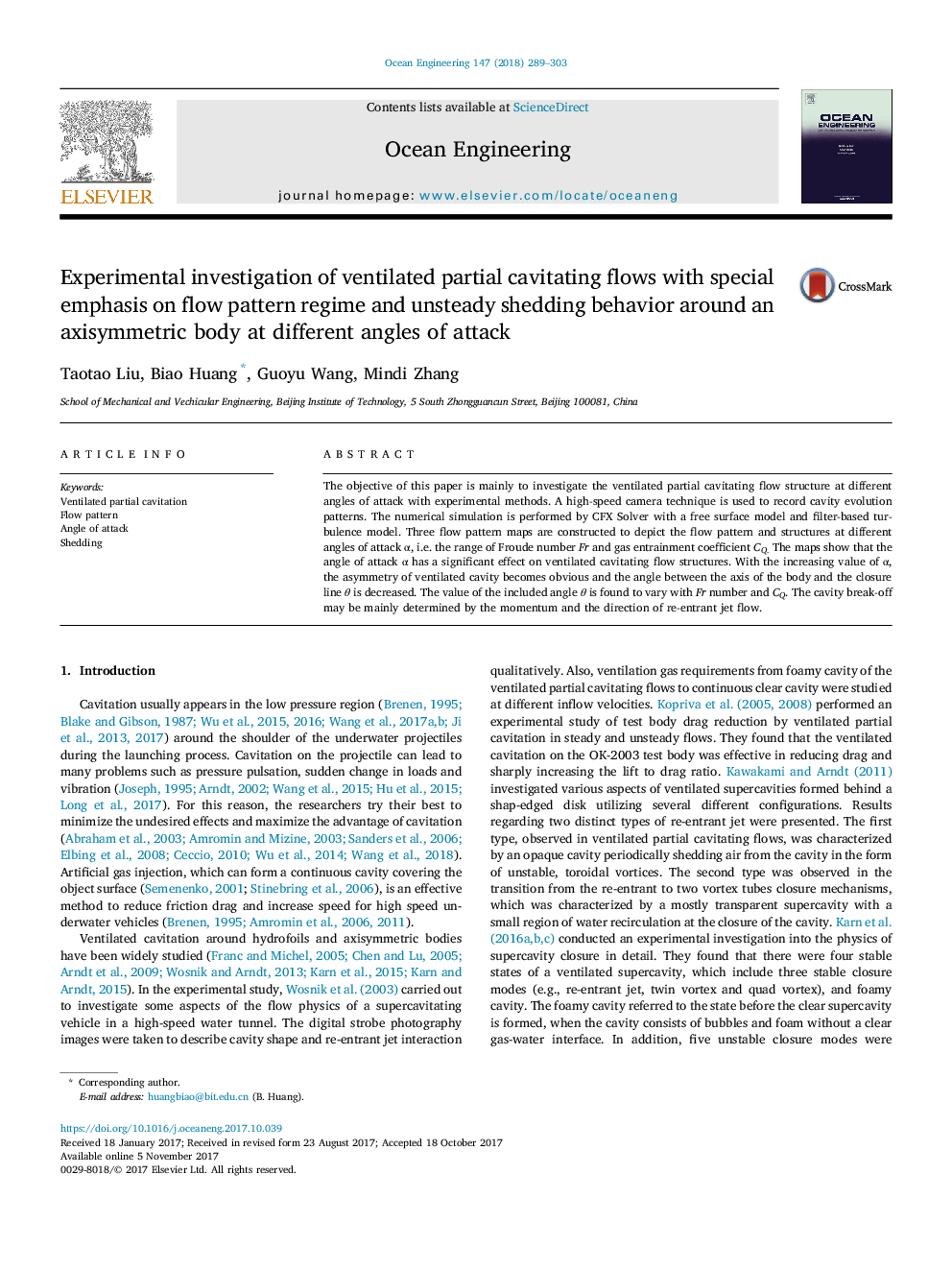| Article ID | Journal | Published Year | Pages | File Type |
|---|---|---|---|---|
| 8063677 | Ocean Engineering | 2018 | 15 Pages |
Abstract
The objective of this paper is mainly to investigate the ventilated partial cavitating flow structure at different angles of attack with experimental methods. A high-speed camera technique is used to record cavity evolution patterns. The numerical simulation is performed by CFX Solver with a free surface model and filter-based turbulence model. Three flow pattern maps are constructed to depict the flow pattern and structures at different angles of attack α, i.e. the range of Froude number Fr and gas entrainment coefficient CQ. The maps show that the angle of attack α has a significant effect on ventilated cavitating flow structures. With the increasing value of α, the asymmetry of ventilated cavity becomes obvious and the angle between the axis of the body and the closure line θ is decreased. The value of the included angle θ is found to vary with Fr number and CQ. The cavity break-off may be mainly determined by the momentum and the direction of re-entrant jet flow.
Keywords
Related Topics
Physical Sciences and Engineering
Engineering
Ocean Engineering
Authors
Taotao Liu, Biao Huang, Guoyu Wang, Mindi Zhang,
